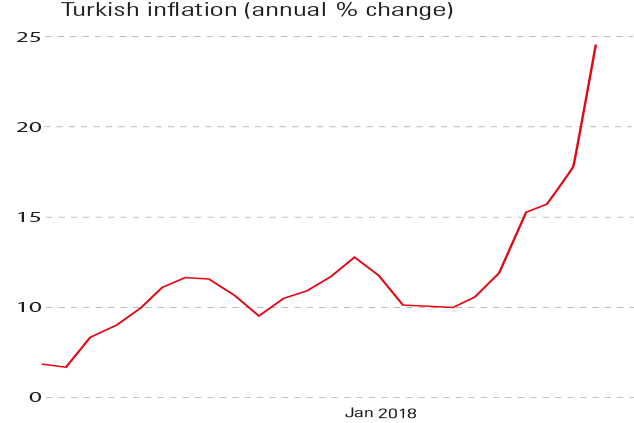
Inflation in Turkey has soared to its highest level since 2003. In August, the annual rate of consumer price inflation had reached around 18% but in September it was almost 25%. Food prices rose by 6.4% in September alone.
Turkish consumers have been facing severe double-digit inflation for almost two years now, largely thanks to the currency crisis, which has sent the prices of imported goods sky-high.
A failed coup against President Recep Tayyip Erdogan, his authoritarian tendencies and his criticism of the central bank which he insists should keep interest rates low have all caused investors to lose confidence in the country's political and economic stability. The lira has lost half its value against the dollar since 2016.
MoneyWeek
Subscribe to MoneyWeek today and get your first six magazine issues absolutely FREE

Sign up to Money Morning
Don't miss the latest investment and personal finances news, market analysis, plus money-saving tips with our free twice-daily newsletter
Don't miss the latest investment and personal finances news, market analysis, plus money-saving tips with our free twice-daily newsletter
Viewpoint
"When Elon Musk, the founder of Tesla, announced in August he had plans to take the company private, the news did not come as a complete shockresearch has alleged that leaders of publicly-listed companies find it hard to implement a long-term vision, say by developing investment plans, because of the pressures of quarterly earnings reports But there is a catch: the data on company activity may not support [this view US data covering] 2.7 million firm-years' suggests that listed groups actually invest 48.1 percentage points more not less than private ones, after adjusting for sector and size. More remarkable still... when privately held companies went public, their R&D-to-physical-asset ratios increased by 34.5 percentage points, and their "R&D-to-total investment shares by 17.1 percentage points". When publicly listed companies went private, however, there was a reduction in R&D investments'".
Gillian Tett, Financial Times
Get the latest financial news, insights and expert analysis from our award-winning MoneyWeek team, to help you understand what really matters when it comes to your finances.
MoneyWeek is written by a team of experienced and award-winning journalists, plus expert columnists. As well as daily digital news and features, MoneyWeek also publishes a weekly magazine, covering investing and personal finance. From share tips, pensions, gold to practical investment tips - we provide a round-up to help you make money and keep it.
-
 Pundits had a bad 2025 – here's what it means for investors
Pundits had a bad 2025 – here's what it means for investorsThe pundits came in for many shocks in 2025, says Max King. Here is what they should learn from them
-
 The MoneyWeek ETF portfolio – early 2026 update
The MoneyWeek ETF portfolio – early 2026 updateThe MoneyWeek ETF portfolio had a solid year in 2025 and looks well placed for what the next 12 months may bring
-
 The charts that matter: bond yields and US dollar continue to climb
The charts that matter: bond yields and US dollar continue to climbCharts The US dollar and government bond yields around the world continued to climb. Here’s what happened to the charts that matter most to the global economy.
-
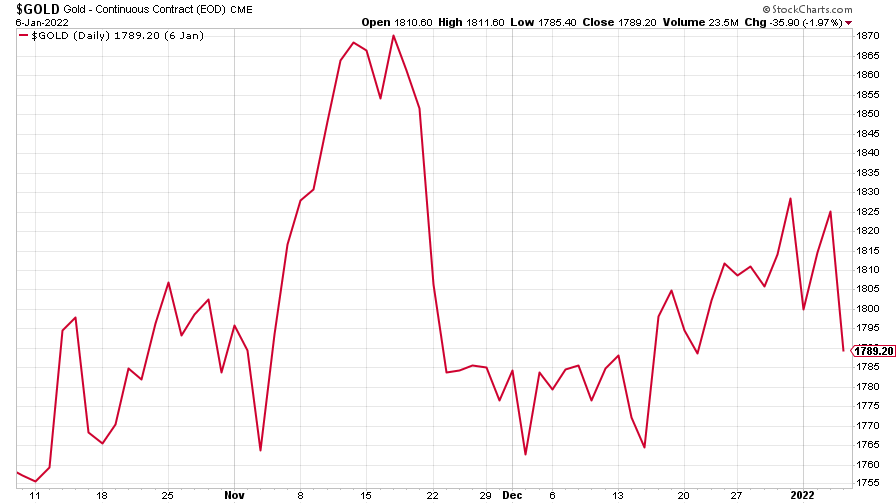 The charts that matter: markets start the year with a crash
The charts that matter: markets start the year with a crashCharts As markets start 2022 with a big selloff, here’s what happened to the charts that matter most to the global economy.
-
 The charts that matter: Fed becomes more hawkish
The charts that matter: Fed becomes more hawkishCharts Gold rose meanwhile the US dollar fell after a key Fed meeting. Here’s what else happened to the charts that matter most to the global economy.
-
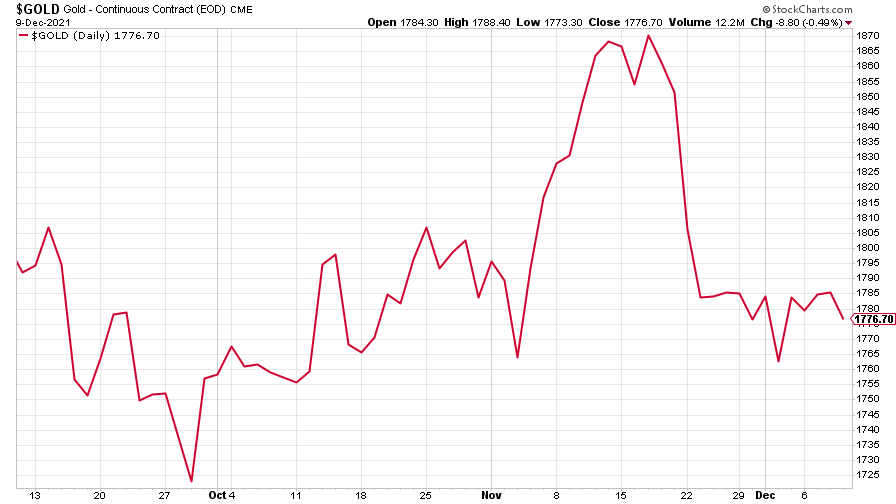 The charts that matter: a tough week for bitcoin
The charts that matter: a tough week for bitcoinCharts Cryptocurrency bitcoin slid by some 20% this week. Here’s what else happened to the charts that matter most to the global economy.
-
 The charts that matter: omicron rattles markets
The charts that matter: omicron rattles marketsCharts Markets were rattled by the emergence of a new strain of Covid-19. Here’s how it has affected the charts that matter most to the global economy.
-
 The charts that matter: the US dollar keeps on strengthening
The charts that matter: the US dollar keeps on strengtheningCharts The US dollar saw further rises this week as gold and cryptocurrencies sold off. Here’s how that has affected the charts that matter most to the global economy.
-
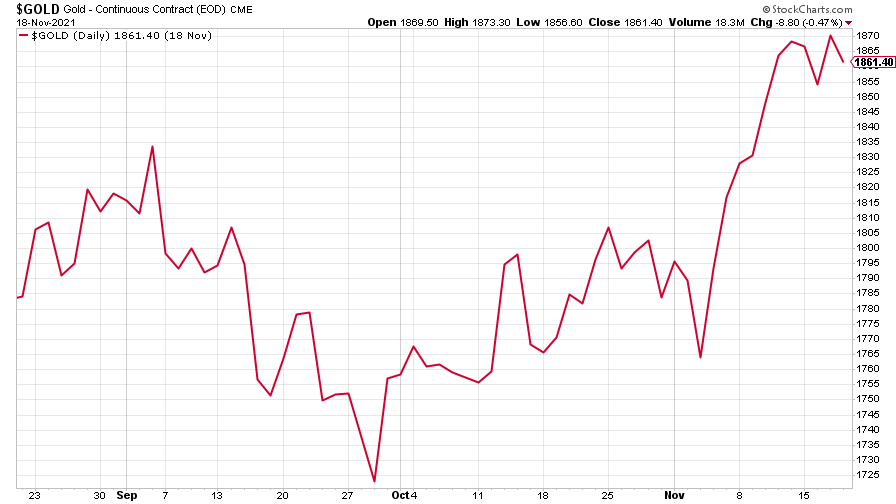 The charts that matter: gold hangs on to gains while the dollar continues higher
The charts that matter: gold hangs on to gains while the dollar continues higherCharts The gold price continued to hang on to last week’s gains, even as the US dollar powered higher this week. Here’s how that has affected the charts that matter most to the global economy.
-
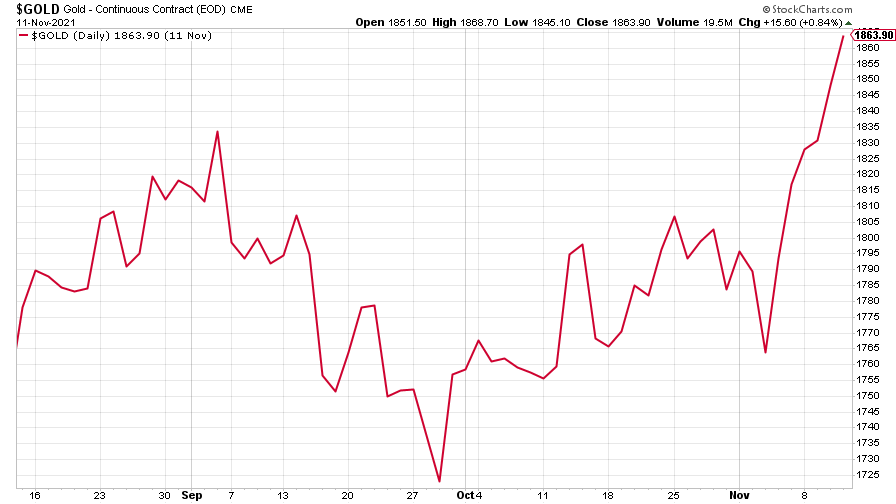 The charts that matter: inflation fears give gold a much needed boost
The charts that matter: inflation fears give gold a much needed boostCharts US inflation hit its highest in 30 years this week, driving gold and bitcoin to new highs. Here’s how that has affected the charts that matter most to the global economy.

